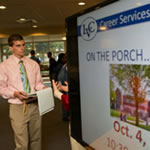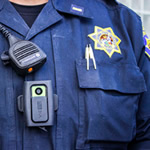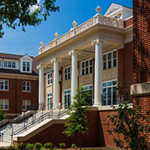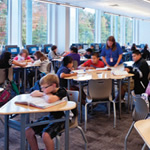College and universities should carefully consider their business plans to achieve successful results for today's nontraditional student population.

A look at the challenges facing a digital signage network in higher education.
Educators know that students learn at different paces and on varying levels, so alternative methods of instruction are beneficial. Audio/visual aids make learning entertaining and fun, and encourage students to pay attention because they are engaged and interested. When these aids are coupled with a well-spoken instructor, the possibilities to learn are endless.

Researching, selecting, planning, installing and using today’s high-tech security systems in schools can be a daunting process. Technology aside, there’s also the human dimension. That is, how best to work with consultants, faculty and staff as that process unfolds?

A look at the newer security technologies colleges and universities are considering and using on campus.

From BIM to energy-use monitoring, WiFi and more, existing buildings are being redesigned and outfitted to become technological standouts.

New school bus technologies are cutting costs, monitoring students, finding students for parents and more.

Important traditions live on in a new residence hall at the University of Georgia.
Integrated classroom controls can expand teaching options at the touch
of a well-placed button.
A strong case for virtualization in higher education.
With the growth of private and charter schools it is clear parents are looking for choices. Districts are evolving their curriculum to include programs focused on S.T.E.M (science, technology, engineering and mathematics), the arts and language immersion
Bridging the digital divide in rural schools.
Technology is modernizing the traditional instructional environment. The modern college student arrives on campus with more than just a suitcase in tow. An array of gadgets will also be on hand, including a tablet computer, a smartphone, an MP3 player, perhaps a laptop.

How flipping classrooms will alter classroom design, furnishings and technology to help students learn more.
Communication is key, especially during emergencies. Technology can help spread the word.